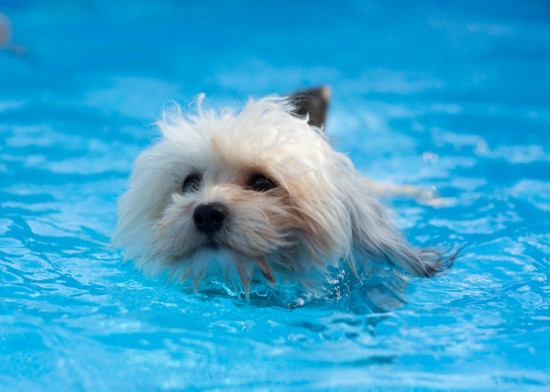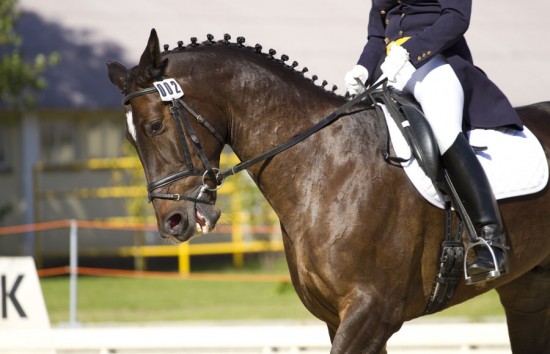

It is a common misconception that all dogs are born simply knowing how to swim, and that if they happened to jump or fall into the water, they would do so instinctively. While your dog would certainly make paddling movements and may indeed be able to stay afloat successfully, this is a rather dangerous way to introduce your dog to water for the first time, and may not only prove to be counterproductive, but also possibly frighten them off swimming again.
Whether you have had your dog from the time that they were a puppy, or if they were already adult when they came to live with you, it is wise to introduce them to water and the idea of swimming within a supervised setting, even if you never intend for your dog to go swimming on a regular basis.
In this article, we will look at how to do this safely and so that your dog does not become afraid of water, in order to give them the best chance of a successful first dip! Read on to learn more.
Much as many people think all dogs know instinctively how to swim, so do the majority of people assume that all dogs are physically capable of swimming, but this is not the case!
Certain breeds and types of dogs are unable to swim effectively due to their physical conformation, which may make them non buoyant or unable to both paddle and keep their heads up at the same time while in the water.
If your dog falls into one of these categories, you should work on the assumption that they cannot swim, but if possible, find a safe, shallow pool with a gentle slope to test out your theory safely to be sure.
If your dog falls into one of these categories, take special care with them around water to ensure that they do not fall in, unless you are sure that they can swim.
First of all, pick your location carefully to ensure that it is a good, safe pick for swimming. Use a paddling pool that is deep enough to allow swimming, or a still, non-tidal pool that has a gentle slope into the water to ensure that your dog can get back out again. If you take your dog swimming in the wild, make sure that the pool is clean and not dangerous. Also, make sure that the water is not too cold!
Let your dog go up to the edges of the water in their own time, and sniff about, get their paws wet and generally explore the edges in their own time. Do not try to push or force your dog into the water.
Tempt your dog to step into the water by walking in a little way yourself, and speak encouragingly to your dog while offering them treats and praise. Find a toy that will float and use this to tempt your dog to go in a little further! If you are not sure if your dog is physically capable of swimming, use a canine life jacket or buoyancy aid for extra safety while you go through this process.
When your dog is relaxed and comfortable with things so far, encourage them to go out a little further, while still being able to reach the base of the pool. If your dog is unhappy or frightened, again, do not push them or force them outside of their comfort zone. It is important that your dog is having a good time and not frightened, or they will be reluctant around water in the future.
When your dog gets to the point where their paws are only just touching the floor of the pond, they may begin to swim on their own, but also be prepared for the possibility that they may not know quite what to do!
Support your dog around their middle gently while they get to grips with this, and remember that the sensation of the water and not being on the floor will be rather odd for your dog! Your dog should begin paddling with their front legs in order to keep their head above the water, but to encourage them to use their hind limbs too, raise their back end up slightly, which should encourage them to kick with their hind legs while paddling with their front legs.
When your dog is paddling with their front legs as well as kicking with their hind legs, they should be buoyant in the water, and you will be able to remove your supporting hand. Let your dog splash about and explore the water while swimming, using their toy to keep them entertained.
Remember that swimming, particularly for the first time, can be very tiring, so do not try to stop your dog from leaving the water when they want to. Show them where and how to get out, and praise them warmly. Remember to bathe your dog in clean water and dry them thoroughly after every swimming session as well!
 How to Make a Dog Denim Jacket by Yourself
How to Make a Dog Denim Jacket by Yourself
As
How to Make a Dog Denim Jacket by Yourself
How to Make a Dog Denim Jacket by Yourself
As
 When Should Puppies Really Be Weaned?
When Should Puppi
When Should Puppies Really Be Weaned?
When Should Puppi
 How To Keep An Outdoor Cat Indoors If Needed
How To Keep An Ou
How To Keep An Outdoor Cat Indoors If Needed
How To Keep An Ou
 Competing In Your First Horse Show
Competing In Your
Competing In Your First Horse Show
Competing In Your
 Herbs And Horses - The Benefits
Herbs And Horses
Herbs And Horses - The Benefits
Herbs And Horses
Copyright © 2005-2016 Pet Information All Rights Reserved
Contact us: www162date@outlook.com